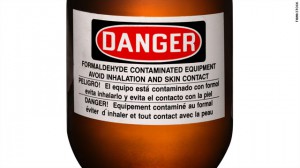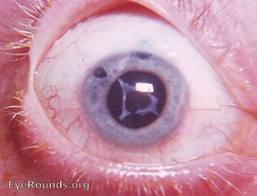Formaldehyde Exposures and Leukemia Links Tenuous or Absent, New Study Finds
By Thomas Tobin, San Diego on December 15, 2015
A new study cases doubt on the longstanding, generally accepted link between formaldehyde exposure and certain disease end points, including Acute Myeloid Leukemia. Within the past few months, Dr. Harvey Checkoway of the University of California at San Diego and six other occupational medicine specialists published an article entitled “Formaldehyde Exposure and Mortality Risks From Acute Myeloid Leukemia and Other Lymphohematopoietic Malignancies in the US National Cancer Institute Cohort Study of Workers in Formaldehyde Industries.” (Harvey Checkoway, PhD, Linda D. Dell, MS, Paolo Boffetta, MD, MPH, Alexa E. Gallagher, PhD, Lori Crawford, MS,Peter SJ. Lees, PhD, CIH, and Kenneth A. Mundt, PhD , J Occup Environ Med. 2015 Jul; 57(7): 785–794.) This article will have a significant impact on those defending chemical exposure matters involving claimed exposure to formaldehyde and other related chemicals. Should other epidemiologists accept the findings of this article, there may be a shift away from claiming formaldehyde at any dose can cause AML and certain other blood-related cancers. The end result will likely put the spotlight back on alleging trace benzene as the potential culprit.

The stated goal of the review in this article was ambitious. The authors of the review considered all available literature addressing the issue of the potential link between exposure to formaldehyde and various hematopoietic disease end points. The article focused on whether formaldehyde is in fact a recognized risk factor in the development of lymphohematopoietic malignancies, including Acute Myelogenous Leukemia (“AML”), Non-Hodgkins Lymphoma (“NHL”), and other related disease end points. The article’s authors concluded, “Insofar as there is no prior epidemiologic evidence supporting associations between formaldehyde and either Hodgkin leukemia or chronic myeloid leukemia, any causal interpretations of the observed risk patterns are at most tentative. Findings from this re-analysis do not support the hypothesis that formaldehyde is a cause of AML.”
These conclusions are significant in matters alleging exposure causing AML, NHL, and other leukemias as disease end points. We have seen a recent uptick in matters alleging lower exposures to formaldehyde in the mortuary and laboratory settings as a cause of AML and NHL. This article questions the very suggestion that AML can be caused by exposure to formaldehyde. It is also suggests that NHL and chronic myeloid leukemia may not be caused by formaldehyde exposure. We expect that there will be increased motion practice challenging general causation in these cases.
Should the focus shift away from alleging formaldehyde as the agent of causation, another likely effect of this study, if accepted, is a return to the use of the argument that trace benzene may cause the disease end points in these cases. In most instances, cases involving formaldehyde exposure often involve exposure to trace levels of benzene in chemicals used simultaneously in various industrial settings. We expect there to be more to come in terms of scientific literature addressing this topic given the potential significant paradigm shift this article promotes.

 practical result of raising the bar for class certification and leveling the playing field for corporate defendants. Until recently, however, it was unclear what impact this anti-trust decision would have on toxic tort litigation.
practical result of raising the bar for class certification and leveling the playing field for corporate defendants. Until recently, however, it was unclear what impact this anti-trust decision would have on toxic tort litigation.  The Court held that "mere assertion by class counsel that common issues predominate is not enough. That would be too facile. Certification would be virtually automatic. And so Rule 23 does not set forth a mere pleading standard….Rather, when factual disputes bear on issues vital to certification (that is, to whether the suit should be allowed to be litigated as a class action), such as predominance, the court must receive evidence . . . and resolve the disputes before deciding whether to certify the case." (emphasis added) In reviewing the record below, the court stated that it was not even clear that plaintiffs "have identified a common issue."
The Court held that "mere assertion by class counsel that common issues predominate is not enough. That would be too facile. Certification would be virtually automatic. And so Rule 23 does not set forth a mere pleading standard….Rather, when factual disputes bear on issues vital to certification (that is, to whether the suit should be allowed to be litigated as a class action), such as predominance, the court must receive evidence . . . and resolve the disputes before deciding whether to certify the case." (emphasis added) In reviewing the record below, the court stated that it was not even clear that plaintiffs "have identified a common issue." A substantial effort has been mounted to urge the Colorado Supreme Court to reverse the intermediate appellate court’s ruling on July 3, 2013 in Strudley v. Antero Resources Corp., which determined that Lone Pine Orders are prohibited under Colorado law. In so holding, the Strudley court reversed a trial court ruling that had dismissed plaintiffs’ case for failing to provide the court with any competent prima facie evidence of causation. We discussed the appellate court holding in a recent article, "
A substantial effort has been mounted to urge the Colorado Supreme Court to reverse the intermediate appellate court’s ruling on July 3, 2013 in Strudley v. Antero Resources Corp., which determined that Lone Pine Orders are prohibited under Colorado law. In so holding, the Strudley court reversed a trial court ruling that had dismissed plaintiffs’ case for failing to provide the court with any competent prima facie evidence of causation. We discussed the appellate court holding in a recent article, " nature, entered a Lone Pine Order requiring plaintiffs to make an early prima facie showing of exposure and causation. When plaintiffs failed to meet this burden, the trial court dismissed plaintiffs’ case. A Lone Pine Order typically requires a plaintiff to present sufficient evidence prior to full discovery to establish a foundational evidentiary showing of one or more critical elements of the claims, or to risk possible dismissal.
nature, entered a Lone Pine Order requiring plaintiffs to make an early prima facie showing of exposure and causation. When plaintiffs failed to meet this burden, the trial court dismissed plaintiffs’ case. A Lone Pine Order typically requires a plaintiff to present sufficient evidence prior to full discovery to establish a foundational evidentiary showing of one or more critical elements of the claims, or to risk possible dismissal. In arguing for a case management scheme that would permit the Colorado trial courts to apply Lone Pine, CCJL cautions that Lone Pine is hardly a hammer that should be arbitrarily or routinely invoked and is not by any means a substitute for summary judgment. In summary, CCJL argues that Strudley is bad precedent that will only obstruct the creativity of trial judges in managing their cases.
In arguing for a case management scheme that would permit the Colorado trial courts to apply Lone Pine, CCJL cautions that Lone Pine is hardly a hammer that should be arbitrarily or routinely invoked and is not by any means a substitute for summary judgment. In summary, CCJL argues that Strudley is bad precedent that will only obstruct the creativity of trial judges in managing their cases.  machine was used to assist in the removal of the lens with the cataract.
machine was used to assist in the removal of the lens with the cataract.  tort exposure claims. In an insightful article appearing in
tort exposure claims. In an insightful article appearing in